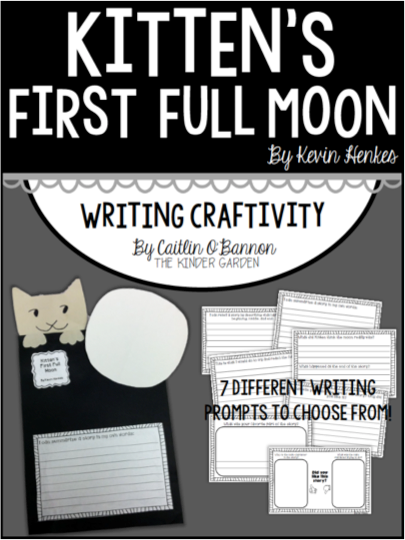A class favorite that I always read every year is Lilly's Purple Plastic Purse. It's a great story, especially for the beginning of the year when you are introducing rules and procedures in the classroom!
In this book, Lilly brings all sorts of fun little trinkets to school and she is excited to share them with the class - a little TOO excited. She interrupts the teacher multiple times until, finally, the teacher takes her prized possessions away and she gets just a little upset. Various shenanigans occur throughout the story until she finally realizes that she shouldn't have acted the way she did. The book is great for a character study on the main character, Lilly, because she changes so often throughout the story and goes through a myriad of emotions. So I used the book for a little study on identifying character traits and describing how the main character changed throughout the story from beginning to end. We created a little anchor chart together and these are all of the words my students came up with to describe Lilly - they did a great job!
You can see from the web words how much the main character changed throughout the story and it was a great discussion to have with my kids to help them understand how to describe her!
The next day, we read the story again and my focus was to have them work on retelling the story by sequencing events. We used the picture retelling cards from the wonderful Guiding Readers K-1 pack by Deanna Jump and Deedee Wills. I put my students into small groups and gave them each a set of retelling cards. They then had to work together with their groups to try and retell the story by putting their pictures in order from beginning to end. It was awesome for me to walk around and hear them all collaborating together on why a certain picture should be moved; or put in this spot; and why, etc. It really helped them think more deeply about the events of the book.
After they put their pictures in order, we came back together as a class and I put the pictures in the correct order so they could check their work. They were SO excited when they got a picture in the correct sequence! Having my students talk with each other and use visuals to retell the story really helped them have a more in depth understanding of what happened in the book, rather than just hearing me stand up there and talk about it as they listened.
Once we finished our group work, my students then got a smaller version of the retell pictures and had to sequence the pictures again on their own. This was a great check for understanding for me on who really understood the sequence of events and what little friends still needed a bit of support on it!
(The small retell pictures are also from the ladies' Guiding Readers pack)!
On the third day, we read the story again, this time by listening to this version on Youtube, just to change it up a little bit so that it didn't get too stale for them:
First, I read the story aloud and, as we go through the story, I'll stop periodically and ask my students what the kitten did using order words such as first, next, then, after that... this helps them recall the order that events occurred in the story because they've got that vocabulary to guide them. After discussing the main events in the story, I modeled how to summarize the story in their own words. I told my kids excitedly that they would get to tell the story with the words that THEY wanted, as if they were going to be the author. They were so into it! I whipped up this little writing craftivity to put with their summaries and they turned out so great! In the story, the kitten sees the moon and is attempting to get to it because he thinks it is a bowl of milk. In the craftivity, he is peeking over the edge to try and get to the moon, which is popping off the page 3D style!
Here are some student samples of the Kitten's First Full Moon story summary craftivity:
If you're interested in adding this story summary/reading comprehension craftivity to your Kevin Henkes' study, you can grab it from my TPT store by clicking the picture below! There are multiple differentiated writing template options available in the pack to help you best fit the needs of your students!
I could go on and on about all of his books... they are all wonderful options for teaching story elements and reading comprehension skills! What are some of your favorite Kevin Henkes books?




















